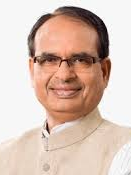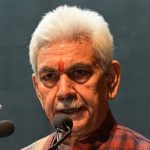Under the visionary leadership of Prime Minister Shri Narendra Modi, continuous reforms and farmer-centric initiatives have led to steady growth in the agriculture sector and the country has achieved record production of paddy, wheat, maize, groundnut and soybean.As per the third Advance Estimates for the production of major agricultural crops for the agricultural year 2024-25, Total food grain production in the year 2024-25 is estimated at 353.96 million tonnes which is the highest food grain production till date and 40% more than the year 2014-15 (252.02 million tonnes).
Indian agriculture has transformed from stagnation and food insecurity before the 1960s to achieving food surpluses today; disproving the Malthusian belief that population growth would outstrip food production. In 1967, William and Paul Paddock predicted famine in India, claiming it couldn’t feed its growing population and controversially argued against food aid, fearing it would worsen future starvation.
The Green Revolution, driven by high-yielding rice and wheat varieties, agrochemicals, and irrigation, proved the Paddocks wrong by boosting India’s foodgrain production from 74 million tons in 1966-67 to 130 million tons by 1979-80. Annual gains peaked at 8.1 million tons (2014–2025), reaching 354 million tons. Horticulture also surged from 40 million tons in the 1960s to 334 million tons in 2024-25, with recent annual increases of 7.5 million tons. Crop production has also become more stable due to advances in stress-tolerant varieties and resilient farming practices.
India’s dairy, poultry, and fisheries sectors have seen remarkable growth. The White Revolution, starting in the 1970s, boosted milk production from 20 million tons to 239 million tons by 2023-24, rivaling Europe. The Blue Revolution in the 1980s raised fish output from 2.4 to 19.5 million tons by 2024-25, making India the second-largest seafood producer and exporter. Poultry evolved from backyard activity to industry, with egg production rising from 10 to 143 billion, and poultry meat from 113 thousand to 5,019 thousand tons over the same period.
Between 2014-15 and 2023-24, animal-source food production saw unprecedented growth: milk rose by 10.2 million tons annually, eggs by 6.8 billion units, broiler meat by 217 thousand tons, and fish (mainly aquaculture) by 0.78 million tons. Technological advances in breeding, resource management, and skilled manpower have driven this surge. High-value foods like fruits, vegetables, and animal products now outpace foodgrain growth, underscoring technology’s key role in agricultural diversification, improved nutrition, farmer income, and resilience to climate shocks.
India’s food production success highlights the transformative role of technology and policy in boosting nutrition, farmer incomes, climate resilience, and exports. ICAR research shows high returns on investment in agriculture- Rs 13.85 and Rs 7.40 for every rupee spent on research and extension. Recent government initiatives like PMKSY (irrigation), PM-KISAN (direct farmer support), the National Livestock Mission, and the Blue Revolution have further strengthened agricultural growth by enhancing resource use, reducing risks, and promoting technology adoption across the agri-food system.
Annual incremental production of different foods in India
| Period | Foodgrains
(million tons) |
Fruits and
Vegetables (million tons) |
Milk
(million tons) |
Marine Fish
(million tons) |
Inland Fish
(million tons) |
Poultry Meat
(000 tons) |
Eggs
(billion numbers) |
Annual spending on R&D (Rs billion at 2011-12 prices) |
| 1966-67 to 1979-80 | 2.7 | 1.3 | 0.9 | – | – | 2.1 | 0.4 | 11.3 |
| 1980-81 to 1989-90 | 6.1 | 2.0 | 2.2 | 0.08 | 0.06 | 21.4 | 1.1 | 20.9 |
| 1990-91 to 1999-2000 | 3.9 | 6.0 | 2.5 | 0.06 | 0.14 | 45.5 | 1.0 | 34.8 |
| 2000-01 to 2013-14 | 3.9 | 8.2 | 4.2 | 0.04 | 0.24 | 148.5 | 3.2 | 68.7 |
| 2014-15 to 2024-25 | 8.1 | 7.5 | 10.2* | 0.12 | 0.78 | 217.0* | 6.8* | 116.3 |
*till 2023-24
By 2047, as India aims to become a developed nation, its economy must grow at 7.8% annually, with a projected population of 1.6 billion- half in urban areas. This shift will double overall food demand, with demand for fruits, vegetables, and animal-based foods expected to triple, while cereal demand remains stable, leading to surpluses.
However, rising urbanization and industrialization will shrink agricultural land from 180 to 176 million hectares, and average landholdings from 1 to 0.6 hectares. This will increase pressure on water and agrochemicals, risking resource degradation. Climate change poses an even greater threat, endangering sustainable agriculture and rural livelihoods.
India’s evolving agri-food challenges call for a realignment of production strategies. Despite exporting 20 million tons of water-intensive rice annually, groundwater sustainability is at risk. Meanwhile, India relies heavily on imports of edible oils and pulses. To ensure food security, protect farmer interests, and conserve resources, crop planning must prioritize water-efficient crops like oilseeds and pulses alongside sustainable farming practices.
India can expand pulses and oilseeds cultivation on 12 million hectares of rice-fallow land left unused due to various constraints. However, low yields- 18-40% gaps in oilseeds and 31-37% in pulses- highlight the need for technological advancements. The Vikshit Krishi Sankalp Abhiyan (VKSA) reached 1.35 crore farmers across 728 districts, promoting improved practices through direct farmer-scientist interaction. To boost production and reduce imports, the government has also launched mission-mode schemes focused on high-yielding seeds for oilseeds, pulses, and cotton.
Agricultural research holds immense potential to boost productivity, resilience, and resource efficiency while lowering costs and managing risks. With growing demand for timely information, modern tools like AI and data analytics are transforming global agri-research.
India currently invests Rs 116 billion annually (0.5% of agri-GDP) in R&D, with plans to increase funding and adopt a demand-driven approach. Strengthening Krishi Vigyan Kendras, state extension systems, and central-state coordination will link research more closely with farmers. Under the “One Nation, One Agriculture, One Team” vision, ICAR nodal officers are guiding state-level action plans to support Vikshit Bharat.
(The Author is Union Minister for Agriculture & Farmers Welfare and Rural Development, Govt of India. Courtesy: PIB)










